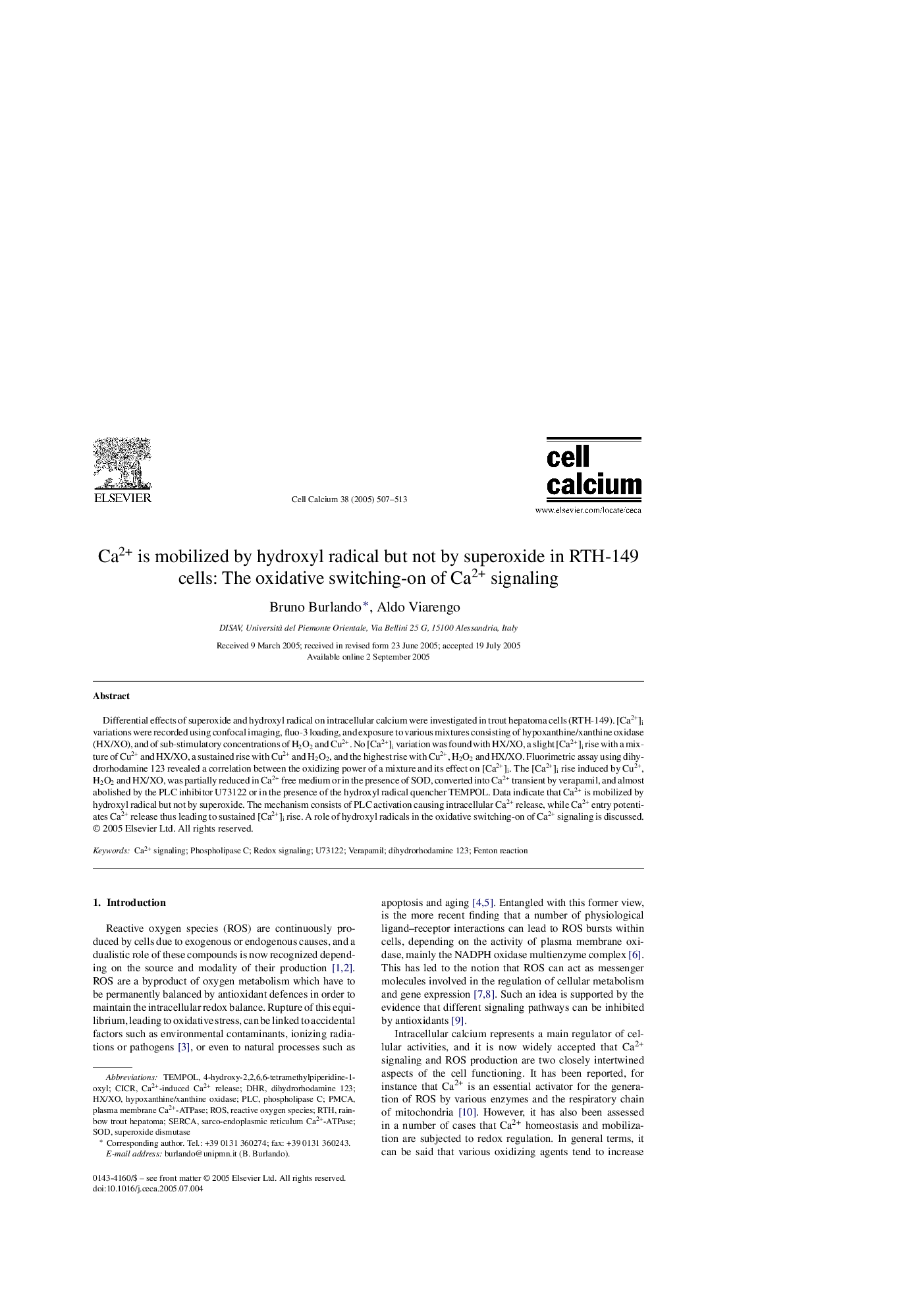| Article ID | Journal | Published Year | Pages | File Type |
|---|---|---|---|---|
| 10926643 | Cell Calcium | 2005 | 7 Pages |
Abstract
Differential effects of superoxide and hydroxyl radical on intracellular calcium were investigated in trout hepatoma cells (RTH-149). [Ca2+]i variations were recorded using confocal imaging, fluo-3 loading, and exposure to various mixtures consisting of hypoxanthine/xanthine oxidase (HX/XO), and of sub-stimulatory concentrations of H2O2 and Cu2+. No [Ca2+]i variation was found with HX/XO, a slight [Ca2+]i rise with a mixture of Cu2+ and HX/XO, a sustained rise with Cu2+ and H2O2, and the highest rise with Cu2+, H2O2 and HX/XO. Fluorimetric assay using dihydrorhodamine 123 revealed a correlation between the oxidizing power of a mixture and its effect on [Ca2+]i. The [Ca2+]i rise induced by Cu2+, H2O2 and HX/XO, was partially reduced in Ca2+ free medium or in the presence of SOD, converted into Ca2+ transient by verapamil, and almost abolished by the PLC inhibitor U73122 or in the presence of the hydroxyl radical quencher TEMPOL. Data indicate that Ca2+ is mobilized by hydroxyl radical but not by superoxide. The mechanism consists of PLC activation causing intracellular Ca2+ release, while Ca2+ entry potentiates Ca2+ release thus leading to sustained [Ca2+]i rise. A role of hydroxyl radicals in the oxidative switching-on of Ca2+ signaling is discussed.
Keywords
hypoxanthine/xanthine oxidaseRTHSarco-endoplasmic reticulum Ca2+-ATPasePMCAPLCU73122DHR4-hydroxy-2,2,6,6-tetramethylpiperidine-1-oxylROSCa2+-induced Ca2+ releasedihydrorhodamine 123SODTempolSuperoxide dismutaseCa2+ signalingRedox signalingPlasma membrane Ca2+-ATPasephospholipase CSERCAFenton reactionVerapamilCICRReactive oxygen species
Related Topics
Life Sciences
Biochemistry, Genetics and Molecular Biology
Cell Biology
Authors
Bruno Burlando, Aldo Viarengo,
